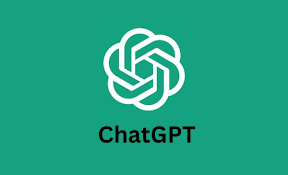
It Can Do ANYTHING!…Except Care!
Headlines everywhere are buzzing about the miracles of ChatGPT and artificial intelligence. From automating jobs to diagnosing complicated health conditions, it seems AI is being hailed as the solution to nearly every challenge in life. But this raises an important question: can ChatGPT also care…can it truly step into the role of a caregiver?
Caregiving can be made easier with artificial intelligence, but human touch and care can’t be replaced by technology.
Can AI Really Care? How Senior Care Professionals Can Use AI to Support Their Work
Senior care professionals know that caregiving is more than information and efficiency. It’s empathy, patience, and human connection. While AI can’t replace that, it can support caregivers by reducing workload, enhancing communication, and freeing up time for what matters most: meaningful care.
Here are five ways senior care professionals can use AI tools like ChatGPT to enhance their work:
1. Simplifying Care Documentation
Paperwork takes up valuable time that could be spent with clients. AI can help draft progress notes, care summaries, or shift reports. A caregiver can speak or type a few key points, and AI can organize them into a professional, readable format. This means more consistent documentation and less stress at the end of a long day.
Action item: Try using AI to create a first draft of your care notes, then review and edit for accuracy.
2. Creating Family Communication Tools
Families often want updates, but writing clear, compassionate messages can be time-consuming. AI can help craft newsletters, text updates, or educational handouts that explain a client’s care plan, disease progression, or helpful caregiving tips.
Action item: Use AI to draft a monthly family update email about common care challenges and resources.
3. Planning Activities and Engagement
Stimulation is vital for older adults, especially those living with dementia. AI can suggest personalized activities based on age, mobility, interests, or memory challenges. For example, you could ask AI to generate a list of sensory-friendly activities for someone in mid-stage dementia.
Action item: Ask AI for 10 new activity ideas tailored to a client’s specific interests.
4. Providing Education and Training
Not every caregiver has easy access to formal training, but AI can act as an on-demand educator. It can explain concepts like “sundowning,” give quick refreshers on safe transfer techniques, or summarize complex topics like Medicare coverage.
Action item: Use AI as a quick reference tool during staff training or family education sessions.
5. Reducing Caregiver Stress
Caregiving can be emotionally draining. AI tools can’t replace counseling or peer support, but they can help caregivers reflect and process. For example, AI can guide journaling exercises, suggest stress-reduction strategies, or provide sample scripts for handling difficult conversations with clients or families.
Action item: Use AI to create a self-care checklist for caregivers in your workplace.
In Conclusion
AI is not here to replace caregivers, it’s here to support them. Senior care is, and always will be, about relationships, empathy, and trust. But by letting AI handle some of the background tasks, caregivers can preserve their energy and focus for the most important part of the job: connecting with the people they serve.
